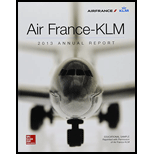
(1) (a)
Journal entry is a set of economic events which can be measured in monetary terms. These are recorded chronologically and systematically.
Accounting rules for Journal entries:
- To record increase balance of account: Debit assets, expenses, losses and credit liabilities, capital, revenue and gains.
- To record decrease balance of account: Credit assets, expenses, losses and debit liabilities, capital, revenue and gains.
To Determine: The sales revenue for the month of December.
(1) (a)
Explanation of Solution
Determine the sales revenue for the month of December.
Sales Revenue:
Working Note:
Thus, the amount of sales revenue is $73,000.
(1) (b)
The cost of goods sold for the month of December.
(1) (b)
Explanation of Solution
Determine the cost of goods sold for the month of December.
Compute the amount of cost of goods sold:
Working Note:
Thus, the amount of cost of goods sold is $64,000.
(1) (c)
The insurance expense for the month of December.
(1) (c)
Explanation of Solution
Determine the insurance expense for the month of December.
Insurance Expense:
Thus, the insurance expenses are $2,500.
(1) (d)
The salaries and wages expense for the month of December.
(1) (d)
Explanation of Solution
Determine the salaries and wages expense for the month of December.
Calculate the cash payments for Salaries and wages expenses.
Thus, the Salaries and wages expenses are $8,000.
2.
To Prepare: The summary journal entries to record the month’s sales, and cost of those sales.
2.
Explanation of Solution
Sales Entry:
The following is the
Record the following journal entry in the general journal:
| Date | Account Title and Explanation |
Post Ref. |
Debit ($) |
Credit ($) |
| 73,000 | ||||
| Sales Revenue (E+) | 73,000 | |||
| (To record the revenues on account) |
Table (1)
- Accounts Receivable is an asset account, and increased by $73,000. Therefore, debit accounts receivable account with $73,000.
- Sales revenue is revenue account, and increased by $73,000. Therefore, credit Sales revenue account with $73,000.
Cost of goods sold Entry:
The following is the accounting equation for the entry.
The following is the accounting entry:
| Date | Account Title and Explanation |
Post Ref. |
Debit ($) |
Credit ($) |
| Cost of Goods Sold (E–) | 64,000 | |||
| Inventory (A–) | 64,000 | |||
| (To record the cost of goods sold) |
Table (2)
- Cost of goods sold is an expense account, and increased which has decreased the equity by $64,000. Therefore, debit cost of goods sold account with $64,000.
- Inventory is an asset and decreased by $64,000. Therefore, credit the inventory account with $64,000.
Want to see more full solutions like this?
Chapter 2 Solutions
LooseLeaf Intermediate Accounting w/ Annual Report; Connect Access Card
- I need help finding the accurate solution to this general accounting problem with valid methods.arrow_forwardI am looking for help with this general accounting question using proper accounting standards.arrow_forwardCan you solve this financial accounting problem using appropriate financial principles?arrow_forward
- Please explain the solution to this financial accounting problem with accurate principles.arrow_forwardCan you solve this general accounting question with accurate accounting calculations?arrow_forwardCould you help me solve this financial accounting question using appropriate calculation techniques?arrow_forward

 AccountingAccountingISBN:9781337272094Author:WARREN, Carl S., Reeve, James M., Duchac, Jonathan E.Publisher:Cengage Learning,
AccountingAccountingISBN:9781337272094Author:WARREN, Carl S., Reeve, James M., Duchac, Jonathan E.Publisher:Cengage Learning, Accounting Information SystemsAccountingISBN:9781337619202Author:Hall, James A.Publisher:Cengage Learning,
Accounting Information SystemsAccountingISBN:9781337619202Author:Hall, James A.Publisher:Cengage Learning, Horngren's Cost Accounting: A Managerial Emphasis...AccountingISBN:9780134475585Author:Srikant M. Datar, Madhav V. RajanPublisher:PEARSON
Horngren's Cost Accounting: A Managerial Emphasis...AccountingISBN:9780134475585Author:Srikant M. Datar, Madhav V. RajanPublisher:PEARSON Intermediate AccountingAccountingISBN:9781259722660Author:J. David Spiceland, Mark W. Nelson, Wayne M ThomasPublisher:McGraw-Hill Education
Intermediate AccountingAccountingISBN:9781259722660Author:J. David Spiceland, Mark W. Nelson, Wayne M ThomasPublisher:McGraw-Hill Education Financial and Managerial AccountingAccountingISBN:9781259726705Author:John J Wild, Ken W. Shaw, Barbara Chiappetta Fundamental Accounting PrinciplesPublisher:McGraw-Hill Education
Financial and Managerial AccountingAccountingISBN:9781259726705Author:John J Wild, Ken W. Shaw, Barbara Chiappetta Fundamental Accounting PrinciplesPublisher:McGraw-Hill Education





